|
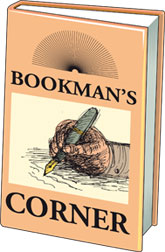
Daughters felicitate Minister Amunugama
Reviewed by Kalakeerthi Edwin Ariyadasa
“One’s father is more than a hundred schoolmasters” - George Herbert
Does the history of literature record an instance of two daughters
jointly publishing a volume to felicitate their father? My memory cannot
conjure up such as eventuality. Given that background, this book must be
unique.
And, the volume that earns such a distinction is “Sarath Amunugama -
A fullife”. The work, produced by the two daughters Ramanika Unamboowe
and Varuni Fernando, possesses a typographic personality of de-luxe,
coffee-table refinement.
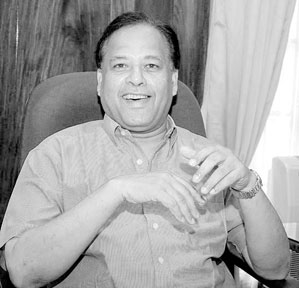 |
|
Minister Dr.Sarath
Amunugama |
But, its elegance is subdued, understated and unobtrusive, reflecting
the cultivated and restrained presence of the subject of the book -
Minister Sarath Amunugama.
As they commence their introduction, the two daughters unambiguously
and unhesitatingly set down their perception of their Appachchi the
Minister.
“Sarath Amunugama, our father is a Sri Lankan icon.”
In their succinct assessment of their father the Minister, the two
daughters make a pithy statement:
Media specialist
“He is well-known in the country for his contribution as a public
servant, a scholar, a media specialist and a politician.”
In their need to be restrained in the pronouncements about their own
Appachchi, they have left out several significant aspects of his life.
He has moved well beyond being a mere politician and has now acquired
the stature of a statesman. He has a considerable international
presence. For a while, he headed AMIC - the Singapore-based media
organisation.
Eliciting facts to recount the early years of their father’s life,
must undoubtedly have proved an exceedingly embarrassing exercise for
the two doting daughters. They cannot praise him too excessively, lest
they appear to be extolling him out of proportion.
Nor can they leave out certain essential details, since that will
make their statement seem incomplete and wanting.
The authors have opted to pursue a middle path, recognising those two
restricting limitations.
Absorbing story
In its spirit, the present work could very well be characterised as a
resume of the absorbing life story of Minister Sarath Amunugama.
The two daughters seem to have quite realistically appreciated, that,
if his biography is adequately narrated, it will invariably fill several
copious and comprehensive volumes. But, with all that, the present work
communicates a sense of satisfying completeness.
The grandparents of the authors - the father and the mother of the
Minister - provided a culturally sensitive, deeply disciplined and
intellectually stirring domestic atmosphere for child Sarath. The
child’s home-life was predominantly bilingual, as the parents were
adequately equipped with Sinhala and English.
Although the authors do not pointedly hint at that possibility, when
he was enrolled at Kandy Girls High School, with due deference to the
required family practice, little Sarath must have been a child prodigy.
His double promotion bears this out.
Trinity days
The authors focus upon the Trinity days of their Appachchi, delving
substantially no doubt, into his chequered recollections. These were
crucial, formative days, that determined the contours of his future
evolution. The teachers at Trinity, impacted upon his character, with a
telling effectiveness, with debonair Hillary Abeyratne impressing him as
the role model.
 From his teenage days on, Sarath Amunugama possessed personality
traits, that ensured prominence among peers and leadership. According to
contemporary undergraduate chronicler Daya de Silva at Peradeniya,
Sarath Amunugama, stood out as exceptional. As Daya de Silva records,
Sarath Amunugama was admired for his “extremely good looks” and his
leadership qualities. From his teenage days on, Sarath Amunugama possessed personality
traits, that ensured prominence among peers and leadership. According to
contemporary undergraduate chronicler Daya de Silva at Peradeniya,
Sarath Amunugama, stood out as exceptional. As Daya de Silva records,
Sarath Amunugama was admired for his “extremely good looks” and his
leadership qualities.
The narrator recounts how youthful Sarath regaled and charmed his
undergraduate audiences, by his recitals of poetry, which included
Shakespeare. As is quite evident from Daya de Silva’s writings, these
beguiling readings of poetry, were given a marked impetus by the
predominant presence of ardent female undergraduates in the audience.
Sense of decorum
With an understandable sense of decorum the autohrs of this volume -
his two daughters - do not make an effort to trace the romantic pursuits
of their father, during his university days.
At the university he read sociology. In hindsight, we can observe,
how this course - choice proved a tower of strength in his life’s
career. For some, studying a subject at the university, may be part of
the routine process of graduation. But to Sarath Amunugama, Sociology
turned out to be a way of life almost. It became his philosophy and
world-view.
As a young civil servant, he served in many parts of the Island. But,
wherever he went, he was wholeheartedly absorbed in the way people lived
in those areas that came under his administrative purview.
In Sri Lankan civil service, he admirably demonstrated the questing
spirit of those classic members of the civil service represented by such
stalwarts as Leonard Woolf.
Versatility
It is satisfying to note that his personality quality, timbre and
versatility were amply recognised even by the United Nations.
Occupying a senior position in the UN system, he functioned as the
Director of the International Programme for the Development of
Communication.
In sum, there is hardly any other person, in public life in Sri Lanka
today, who could claim the national and international experience and
reputation, that Minister Sarath Amunugama, has been able to gain.
Generally speaking, politics, at least in part, is a fearsome jungle,
replete with entrapments, ready to ensnare the unwary. The National and
International Civil Servant, media star, sociologist and statesman,
Minister Sarath Amunugama has succeeded in negotiating the ups-and-downs
of his chosen field, and has emerged unscathed.
His bonhomie, his amiability and his ever present pleasantness are
not at all the segments of a studied theatricality. His disarming
geniality is authentic.
He is at home in any group. In the volume authored by his daughters,
the series of photographs makes up for the spare text.
For the two daughters, the production of this volume has been a
labour of love as quite clearly stated in the last section of their
introduction: “Our Appachchi has been the centre of our universe and the
inspiration on our lives. We greatly appreciate the love and support he
has lavished.”
An unarticulated but clear question seems to be implied in this
statement. Why should the world not take up this matter from here on and
p roduce a profound study of the work of our Appachchi, at national and
international level. The volume is a challenge.
The world will be grateful to these two daughters for their love and
affection - inspired felicitation of their Appachchi, who is an
unparalleled “Icon”, whatever way you may look at him.
Dutugamunu the King and the Commander-in-Chief:
Balanced view of King Dutugamunu
Reviewed by U. V. H. Perera
The book “Maha Senapathi Dutugamunu Rajatuma” by Dr. P. G. Punchihewa
admirably fills a vacuum crated since dropping of history as a subject
from the school curriculum.
The publication is timely. About 40 years after the first tsunami,
during the time of the King Kelanitissa, Sri Lanka emerged as a unitary
State. Five years after the second tsunami Sri Lanka came to be a full
pledged unitary State after 30-years of struggle.
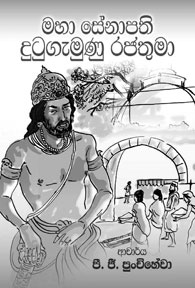 |
|
Mahasenapathi
Dutugamunu Rajatuma
Dutugamunu the King and the Commander-in-Chief
Author: Dr. P. G. Punchihewa
Published by Sarasavi Publishers |
The book though originally intended for children was further enriched
by the inclusion of findings from chronicles, religious literature,
stone inscription, recent history books and folk stories.
This perusing has enabled the author to present a more balanced
picture of King Dutugamunu, Sri Lanka’s most beloved and respected
national hero, the incomparable in the long line of famous kings who
ruled the Island.
The inclusion of research material has not made the book more
difficult for children of the higher grades to understand.
It is equally appealing to the adult and the young. The language is
simple and free from erudite jargon.
The author points out many a first in history that Dutugamunu could
rightly claim. He was never a conqueror for its own sake motivated by
expansion of power and domain.
His twin objects were uniting the country and the protecting of
Buddhism. It took more than three decades to achieve his first
objective. He was true to his promise to Maha Sangha. He spent the
remaining 24 years of his life in fulfilling his second objective.
It was a long preparation for war. In this he was ably supported by
the King Kavantissa who with foresight organised the first professional
army, provided training and manufactured the necessary weaponry.
The author points out that the role of Kavantissa had been
underplayed in the chronicles. It was eclipsed by the charismatic aura
of the son.
He succeeded in maintaining internal peace among the sub kingdoms in
Ruhuna and also prevented the decimation of his professional army by
making it to remain natural in the battle between the two brothers.
Patrimony
Any military campaign if it is to succeed requires able leadership,
trained army, weapons, food and public support. His patrimony was the
army with its twelve commanders and weaponry. Dutugamunu so admirably
provided the leadership and organised the food supply with the help of
his brother. He himself set an example by engaging in paddy cultivation.
In fact Uva Wellassa first aswaddumized by Prince Tissa, served as
the Sri Lanka’s granary until it was completely devastated by the
British during the 1818 rebellion.
Dutugamunu did not have the advantage of terrain that the latter day
Kandyans had. He had to fight in open field and it was a question of
taking over fortress after fortress. It took four months to take
Vijithapura involving great human sacrifice.
His was the first and the last personal combat in Mahabharata
tradition between two kings in Sri Lanka. The author discusses the
succeeding person to person combat between Dutugamunu and Bhalluka. It
took place four months after the death of Elara.
It is not clear why Dutugamunu, now the sole King of the Island faced
the invader in person. Bhalluka was not of Royal lineage and it was not
required by the traditional etiquette of war. Looking at this incident
in retrospect we feel that the King has over extended himself. It was an
unnecessary risk.
However, Bhalluka used the bow which had a longer range than the
spear which Dutugamunu carried. Thanks to Phussadeva’s skill in archery,
the encounter did not end in disaster for the country.
Was it chivalry that prompted this action? We can only speculate. It
may be possible that it was humane considerations that prompted his
action. He had seen enough carnage and probably did not want to pit his
depleted army against the invader in a pitched battle.
Colossal religious constructions.
An index to his greatness was the way he conducted the last rites of
Elara. Such high regard had never been paid to a fallen adversary by any
victor in history.
His self included edict was respected during the past two thousand
years.
He was also the first to start colossal religious constructions.
Though Jatavana and Abhayagiri are bigger in size Ruvanweli Dagaba still
remains as the Maha Thupa. (At a height of 300 feet, it should give a
horizon of 21 miles on flat terrain with unobstructed view.
The shortest distance to the Western coast in a straight line from
Anuradhapura is about 40 miles.)He devoted the 24 years of his life as
the sole king of Sri Lanka to the uplift of Buddhism and to improve the
well-being of his subjects. Even the wellbeing of animals was cared for.
He remained true to his wife of Kotmale days who was not of royal
lineage as some of our kings did.
The humane way he treated his son Saliya who gave up the hard won
throne of the entire Island to marry a low caste beauty is yet another
example of his greatness.
It is essential to compare and contrast and to sift essential
references from diverse sources in order to arrive at a balanced view.
There are exaggerations in ancient literature, more specifically in case
of arithmetic figures. Reading chronicles and traditional literature is
cumbersome and time-consuming for students and many an adult.
Books of this nature meet the need of presenting an overall balanced
view in a readable way. I wish many more presentations of this nature
will come from the author.
The writer is a former Director of Research, Coconut Development
Authority.
Book Launch
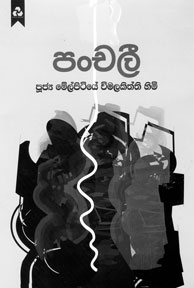 Panchali Panchali
Ven.Melpitiye Wimalawathi's latest Sinhala novel "Panchali" will be
launched at dayawansa Jayakody Book exhibition Hall,Colombo 10 on July
20 at 10 am. "Panchali" is a Dayawansa Jayakody Publication.
**************
Microsoft Office Excel 2007
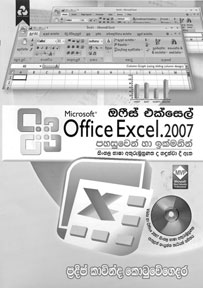 Pradeep Kavinda Kotuwegedara’s latest book ‘Microsoft Office Excel
2007’ will be launched at the National Library Services and
Documentation Board auditorium, Independence Avenue, Colombo 7 on July
12 at 3.30 p.m. Pradeep Kavinda Kotuwegedara’s latest book ‘Microsoft Office Excel
2007’ will be launched at the National Library Services and
Documentation Board auditorium, Independence Avenue, Colombo 7 on July
12 at 3.30 p.m.
Kotuwegedara’s other books include “Vyapara Ha Ayathana Pariganaka
Gatha Kirima”, “Web Adavi Sekasima” and “Pariganakaya Nivaradiva
Hasuravamu”.
“Microsoft Office Excel 2007” is a Dayawansa Jayakody publication. |

